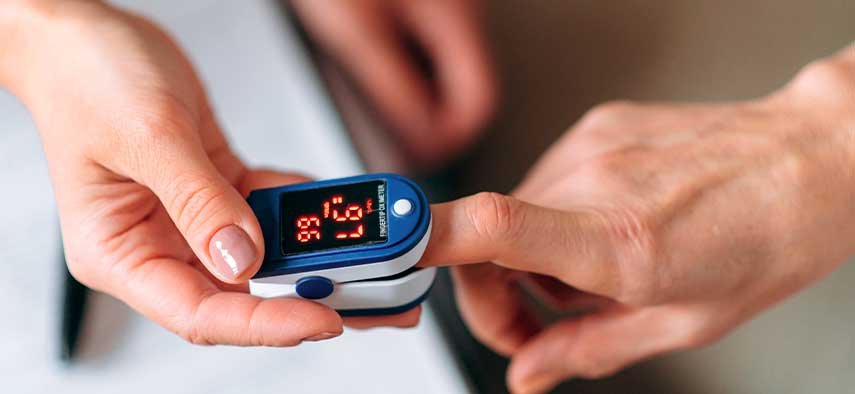Pulse Oximeter
Daily Health Checks including Pulse Oximeter
As part of our safety procedures, our guides conduct daily health checks on all of our climbers during the Kilimanjaro climb to ensure that they are adjusting to the thinner air and do not develop early symptoms of altitude sickness.
One of the equipment that we use to establish the condition of our climbers is a pulse oximeter. Attached to the end of your finger, a pulse oximeter will utilize beams of light to measure the total haemoglobin in the blood that is saturated with oxygen, as well as your heart rate.
What do the Pulse Oximeter Numbers Mean?
At sea level, most healthy people have an oxygen saturation (SpO2) of 95-99%. As we fly higher, the atmospheric pressure lowers, indicating that there is “less oxygen” in the air, and the oxygen saturation number begins to decline.
The peak of Kilimanjaro contains around 49% of the oxygen available at sea level.
The percentage blood oxygen saturation, together with your heart rate, indicate how effectively your body is adjusting to the altitude. Recording these figures twice daily helps our guides to monitor your general health while on the mountain and identify patterns.

A high pulse rate might indicate a climber’s struggle with low oxygen levels and the body’s effort to adjust. However, these metrics should not be utilized alone.
How we use PulseOx data
Every day while climbing Kilimanjaro, one of our certified guides will do a routine medical check. You will be questioned in depth about how you are feeling, how you slept, and other things to get a sense of how well you are doing.
When combined with any symptoms you are experiencing and how you are feeling, these statistics provide a valuable indication of how well you are acclimatizing. Acclimatization is a complicated adaptation process, and the pulse oximeter only considers one element.





